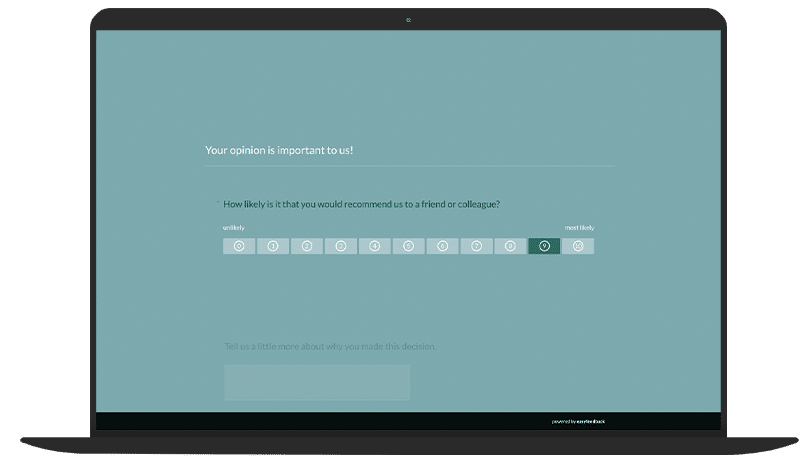Key metric 1: Customer Retention Rate (CRR)
The customer retention rate shows how successful a company is in retaining existing customers.
It is calculated as follows:

A high CRR indicates strong customer relationships.
Key metric 2: Net Promoter Score (NPS)
The NPS measures the likelihood that customers will recommend your company to others.
On a scale from 0 to 10, customers are classified as promoters (9-10), passives (7-8) or detractors (0-6).
The NPS is calculated by subtracting the percentage of detractors from the percentage of promoters.

Key metric 3: Customer Lifetime Value (CLV)
The CLV shows the estimated total value that a customer will generate throughout their relationship with your company.
This key figure helps to evaluate the profitability of customer loyalty measures.
Key metric 4: Engagement rate
This key figure measures the interactions of customers with your marketing measures, such as clicks, likes, shares and comments.
A high engagement rate indicates that your content appeals to the target group.
Key metric 5: Churn rate
The churn rate indicates how many customers a company has lost within a certain period of time.
It is the opposite of the retention rate and should be kept as low as possible.
Key metric 6: First Response Time (FRT)
The time it takes a company to respond to customer inquiries is an important indicator of customer satisfaction.
A quick response significantly improves the customer experience.
Key metric 7: Customer Satisfaction Score (CSAT)
The CSAT measures customer satisfaction with a particular product, service or interaction.
It is often determined with a direct question such as “How satisfied are you?” and rated on a scale of 1 to 5.

Conclusion
Key figures in customer engagement are indispensable tools for measuring and optimizing the success of customer loyalty strategies.
By regularly monitoring and analyzing these metrics, companies can not only improve customer satisfaction and loyalty, but also increase their own competitiveness.
The challenge is to select the right metrics and embed them in a holistic approach to driving customer engagement.
More about Customer Engagement
- Customer Engagement: The art of retaining customers in the long term
- Measuring Customer Engagement: Why it is crucial for your success
- Managing Customer Engagement: Success factors and strategies
- Customer engagement in practice: Real-life examples of successful strategies
- Customer engagement in marketing: Importance, strategies and benefits
- Customer Engagement: The best tools for customer loyalty and interaction




